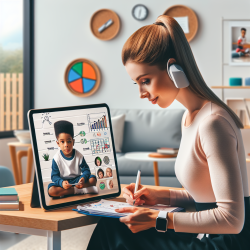The research article "Indirect Observation in Everyday Contexts: Concepts and Methodological Guidelines within a Mixed Methods Framework" by Anguera et al. (2018) presents a compelling case for using indirect observation to analyze spontaneous behavior in natural settings. As practitioners in speech-language pathology, we can leverage these insights to enhance our skills and outcomes for children.Indirect observation involves analyzing textual material generated from natural settings, such as transcriptions of verbal behavior or narratives. This method allows us to capture spontaneous behaviors that occur in everyday contexts, providing a richer and more nuanced understanding of a child's communication patterns.Here are some key takeaways from the research and how you can implement them in your practice:
1. Utilize Mixed Methods for Comprehensive Analysis
The study emphasizes the importance of combining qualitative and quantitative methods. By integrating these approaches, you can achieve a more holistic understanding of a child's communication behaviors. For example, you can use qualitative data from parent interviews and quantitative data from standardized assessments to develop a comprehensive intervention plan.
2. Implement Rigorous Data Quality Controls
The quality of data is crucial for reliable analysis. The research outlines various measures for ensuring data reliability, such as intraobserver and interobserver agreement. Implementing these controls in your practice can help you maintain the integrity of your observations and analyses.
3. Leverage Technology for Data Collection and Analysis
Modern technology offers numerous tools for recording and analyzing verbal behavior. Software programs like ATLAS.ti and NVivo can help you manage and analyze large datasets efficiently. Utilizing these tools can enhance your ability to detect patterns and trends in a child's communication behavior.
4. Focus on Natural Contexts
Indirect observation allows you to study behaviors in natural contexts, free from the artificial constraints of a clinical setting. This approach can provide more accurate insights into a child's everyday communication skills and challenges, leading to more effective interventions.
5. Encourage Further Research
The study provides a robust framework for conducting indirect observation research. By engaging in further research, you can contribute to the growing body of knowledge in speech-language pathology and improve evidence-based practices.
Conclusion
By implementing the guidelines from the research article, practitioners can enhance their observational skills and create more effective, data-driven intervention plans. Indirect observation offers a powerful tool for understanding and improving children's communication behaviors in their natural environments.To read the original research paper, please follow this link:
Indirect Observation in Everyday Contexts: Concepts and Methodological Guidelines within a Mixed Methods Framework.
